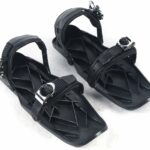Imagine the thrill of snowboarding whenever you want, right in the comfort of your own backyard! Yes, you got that right. The article “How To Build A Snowboard Ramp In Your Backyard?” covers exactly this. The write-up provides a simple and easy-to-follow guide, filled with step-by-step instructions and helpful tips on constructing your personal snowboard ramp. Get ready to transform your backyard into your very own winter sports playground.
Understanding the Basics
When it comes to building your own snowboard ramp, it starts with understanding the basics. This involves getting familiar with the anatomy of a snowboard ramp, choosing the right location and angle for your ramp, and determining the right size for it.
The Anatomy of a Snowboard Ramp
A snowboard ramp typically consists of three main parts: the approach, the take-off, and the landing. The approach is the flat run-up part that allows you to gain speed before hitting the take-off. The take-off, also known as the kicker, is the part of the ramp that propels you into the air. The landing is where you return to the ground. Understanding these parts and their functions can help you design a safe and functional ramp.
Determining the Right Size for your Ramp
The size of your ramp largely depends on your skill level and the types of tricks you plan to perform. A small ramp is great for beginners and for performing basic tricks. However, if you’re more experienced and plan to perform more advanced tricks, a larger ramp may be necessary. Be sure to consider the safety of others as well, particularly if young children or others with less experience will be using the ramp.
Choosing the Right Location and Angle for your Ramp
Ramp placement is key. Ideally, your ramp should be positioned on a moderately flat area, away from obstacles like trees or fences. The approach should have enough space for you to comfortably gain speed and prepare for the take-off. The angle of your ramp also influences your performance. A steeper ramp will give you a higher jump, while a flatter ramp will offer a longer glide.
Planning Your Snowboard Ramp
Planning is an essential part of building a snowboard ramp. Start by estimating the amount of snow needed to build your ramp, then move on to designing the ramp and calculating its dimensions and angle.
Estimating the Amount of Snow Needed
The amount of snow you’ll need to build your ramp largely depends on its size. A smaller ramp requires less snow, while a larger ramp requires more. If necessary, you can collect and store snow from other areas to meet your needs.
Designing the Ramp
Designing the ramp involves sketching out your plans and deciding on the features you want to add. Whether it’s adding rails or jumps, this is the stage where you can get creative. Just remember to keep safety in mind when designing your ramp and only include features appropriate to your skill level.
Calculating the Dimensions and Angle of the Ramp
The dimensions and angle of your ramp should be based on the types of jumps and tricks you want to perform. The dimensions include the width, length, and height of the ramp, while the angle is determined by the steepness of the kicker.
Planning for Safety-Related Factors
Safety should always be a top priority when planning your snowboard ramp. Consider factors such as the ramp’s distance from nearby obstacles, its stability, and the space available for landing.
Gathering Tools and Materials
Building a snowboard ramp requires a variety of tools and materials. Make a list of what you need before getting started to make sure you’re prepared.
Determining What Tools are Needed
Common tools required for building a snowboard ramp include shovels, snow rakes, and maybe even a snow blower if you have access to one. You may also need a garden hose, a spray nozzle, and a tarp for freezing the ramp.
Choosing the Right Materials for Building
The primary material for your snowboard ramp is, of course, snow. However, you may also want to incorporate other materials like wood for additional features such as rails or jumps.
Safety Gear You Might Need
Don’t forget about safety gear. This might include helmets, padding, and even a first aid kit just in case of an accident.
How to Economically Source Materials and Tools
You don’t need to break the bank to build your snowboard ramp. Borrow tools from neighbors or friends, or rent them from a local tool rental shop instead of buying them outright.
Building the Ramp Base
The base of your ramp is arguably the most important part of your ramp, as it will determine its overall strength and stability.
Marking Out Your Ramp Area
Use stakes and ropes to mark out the area where you want to build your ramp. This will help keep your ramp symmetrical and ensure you have enough space for the approach and landing.
Clearing the Space for the Ramp
Before you can build your ramp, you’ll need to clear the space. This means shoveling away any unnecessary snow and removing any debris or obstacles.
Stacking Snow for the Base
Once your space is clear, start stacking snow to create your base. This should be solid and wide enough to support the weight of the ramp and any snowboarders who will be using it.
How to Ensure a Strong Base
You can ensure a strong base by compacting the snow as much as possible. Use your shovel or stomp down with your boots to push out any air and solidify the snow.
Shaping the Ramp
Now comes the fun part – shaping your ramp! This is where you’ll form the kicker and smooth out the ramp surface.
Crafting the Kickers
The kickers are what give you air and make those tricks possible. They should be steep enough to get you airborne, but not so steep that you risk injury.
Smoothing Out the Ramp Surface
After forming your kicker, focus on smoothing out the rest of the ramp surface. This is important for achieving a smooth, clean run-up and landing.
Strategies for Shaping the Ramp
Shaping your ramp involves slowly whittling away at the snow with your shovel. You can also use your hands for more precision work. Always work from the top down to maintain control over the shaping process.
Ensuring Your Ramp is Symmetrical
A symmetrical ramp is key for balance and control when snowboarding. Use your measurements and markers to keep both sides of your ramp even.
Freezing the Ramp
Once your ramp is shaped, it’s time to freeze it. This solidifies your ramp and helps it last longer.
How and Why to Freeze: The Basics
Freezing your ramp involves spraying a thin layer of water over the surface and allowing it to freeze. It strengthens your ramp and helps it withstand wear and tear.
Spraying Water on the Ramp
Use a garden hose with a spray nozzle to mist water over the ramp. Try to evenly distribute the water to create a smooth, firm surface.
Freezing in Layers
Freezing in multiple thin layers can make your ramp stronger than freezing in one thick layer. Allow each layer to freeze before applying the next.
Tips for Faster Freezing Times
To speed up the freezing process, build your ramp on a cold day and freeze it overnight when temperatures are lowest. If possible, cover the ramp with a tarp to lock in the cold.
Adding the Finishing Touches
Now that your ramp is built and frozen, it’s time for the finishing touches! This could include polishing the ramp surface or adding extra features.
Polishing the Ramp Surface
Use your snow rake or a flat shovel to polish the ramp surface. This creates a smoother ride and minimizes the risk of accidents.
Building Side Walls If Necessary
If your ramp is particularly high or steep, you might want to build sidewalls for added safety. These can help prevent you from accidentally sliding off the sides of the ramp.
Adding Extra Features like Rails or Jumps
Extra features like rails or jumps add fun and challenge to your snowboard ramp. Remember, though, these should only be added if they’re appropriate for your skill level and the skill level of others who will be using the ramp.
Maintaining Your Snowboard Ramp
Once your ramp is built, it’s important to maintain it regularly to ensure it remains safe and functional.
Routine Maintenance Recommendations
Regular maintenance involves smoothing out rough spots on the ramp surface, adding and freezing additional layers of snow as needed, and checking the structure for any weaknesses or damage.
Dealing with Weather Changes
Weather changes can affect the integrity of your ramp. Warm weather can cause it to melt and lose shape, while a heavy snowfall can alter its dimensions. Be prepared to perform maintenance after significant weather changes.
Repairing Damage to Your Ramp
If you notice any damage to your ramp, repair it immediately. This might involve adding more snow, re-freezing certain sections, or adjusting the dimensions as necessary.
Keeping the Ramp Safe for Use
Regular maintenance and timely repairs will help keep your ramp safe for use. However, also remember to monitor anyone using the ramp and ensure they’re using it responsibly.
Safety Precactions
Safety should always be your top priority when using your snowboard ramp. This includes wearing the appropriate safety gear, inspecting the ramp before each use, and knowing your limits.
Wearing Appropriate Safety Gear
Safety gear such as helmets, knee pads, and wrist guards can protect you from injury when snowboarding. It’s also essential to wear appropriate clothing that will keep you warm and dry.
Inspecting the Ramp Before Use
Before you snowboard, inspect your ramp for any potential hazards such as rough spots, ice patches, or structural weaknesses. Make any necessary repairs before proceeding.
Monitoring Weather Conditions
Weather conditions can greatly influence the safety of snowboarding. Avoid using your ramp during wet or icy conditions, and always make sure the landing area is clear of snow and ice.
Knowing Your Limits
Lastly, know your own limits and snowboard responsibly. Don’t attempt tricks that are beyond your skill level, and always have a friend or family member nearby in case of an accident.
Dismantling the Ramp
At the end of the snowboarding season, or when your ramp is no longer in use, it’s important to dismantle it safely and responsibly.
When and Why to Dismantle Your Ramp
When the weather starts to warm up, or when you’re no longer using your ramp, it’s time to dismantle it. Leaving a snowboard ramp up year-round can damage your yard and pose a safety risk.
How to Safely Dismantle the Ramp
Dismantling your ramp should essentially be the building process in reverse. Start at the top and gradually remove snow until you’ve returned your yard to its original state.
Disposing of or Recycling Leftover Materials
If you used any materials other than snow to build your ramp, like wood or metal for rails or jumps, be sure to dispose of or recycle them properly.
Restoring Your Yard Post-Dismantling
Once your ramp is gone, restore your yard as best as you can. This might involve reseeding grass in certain areas or simply letting nature run its course.
And there you have it! Building your own backyard snowboard ramp can be a fun and rewarding project, as long as you plan properly, prioritize safety, and carefully follow each step in the process. Happy snowboarding!
- What Snowboard Bindings Should I Get? - January 23, 2024
- What Size Screws For Snowboard Bindings? - January 23, 2024
- How To Snowmobile On Water? - January 23, 2024










